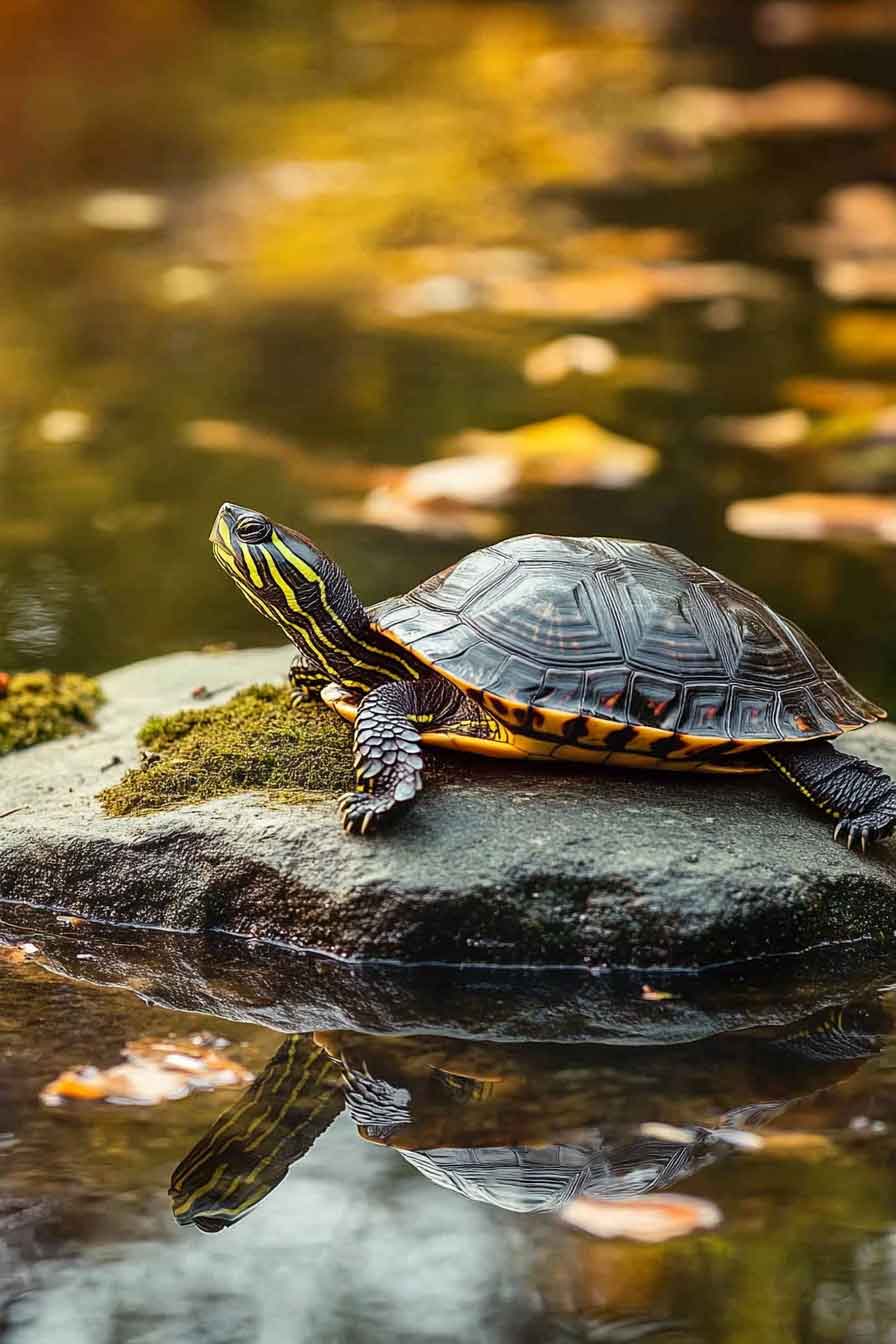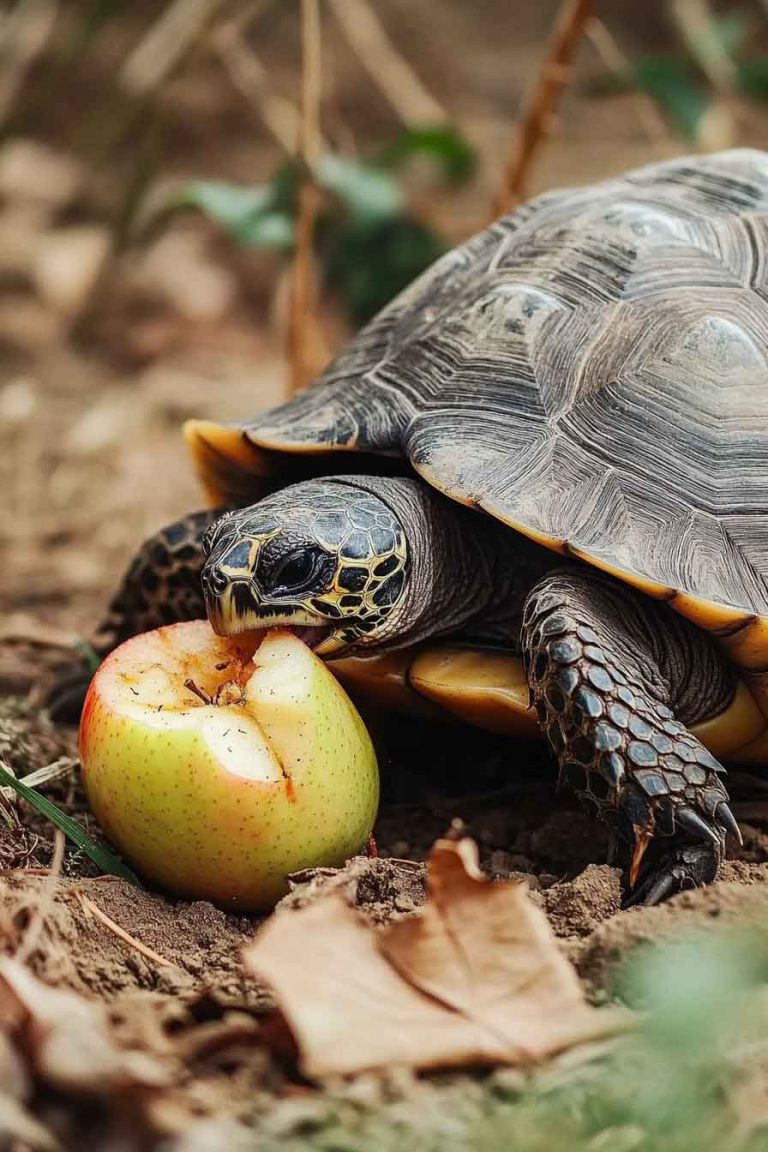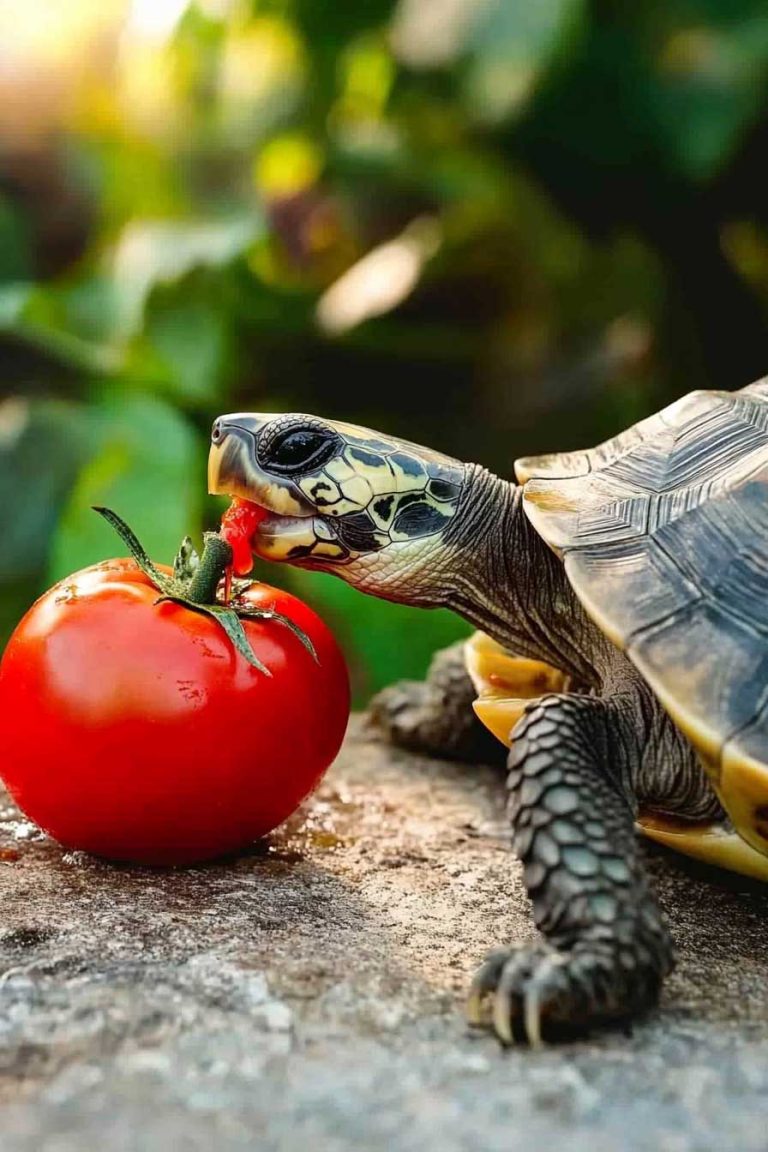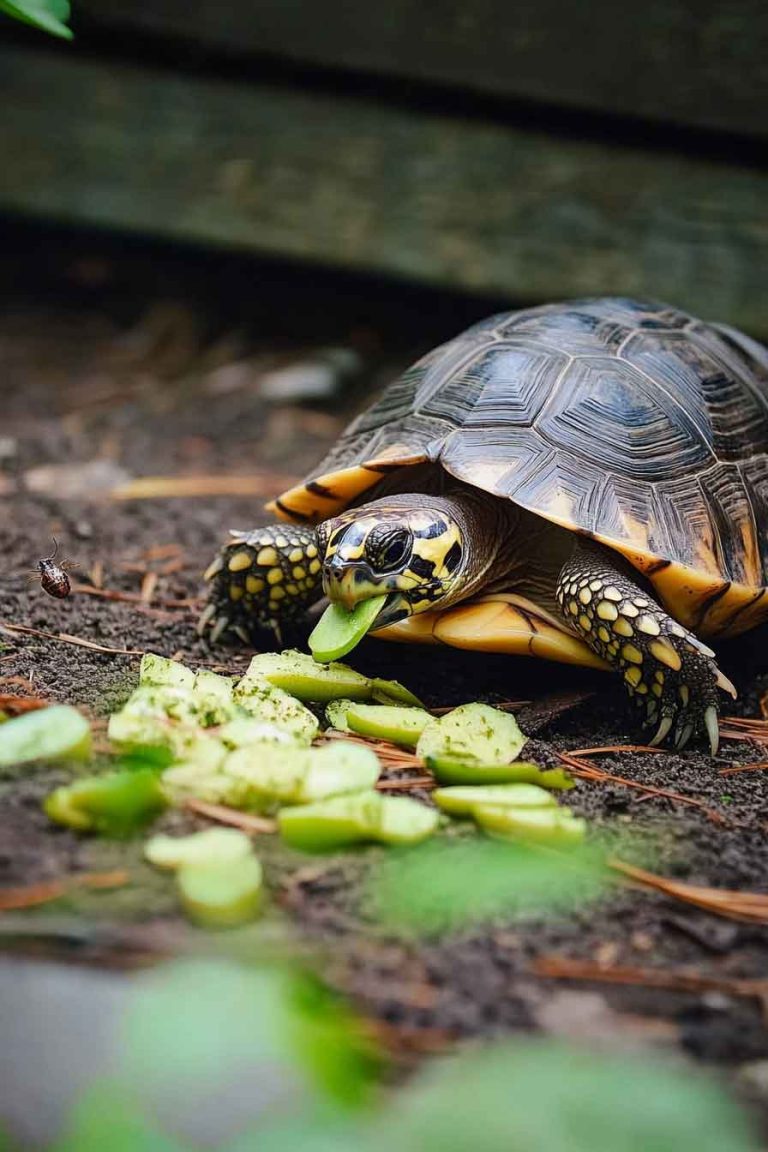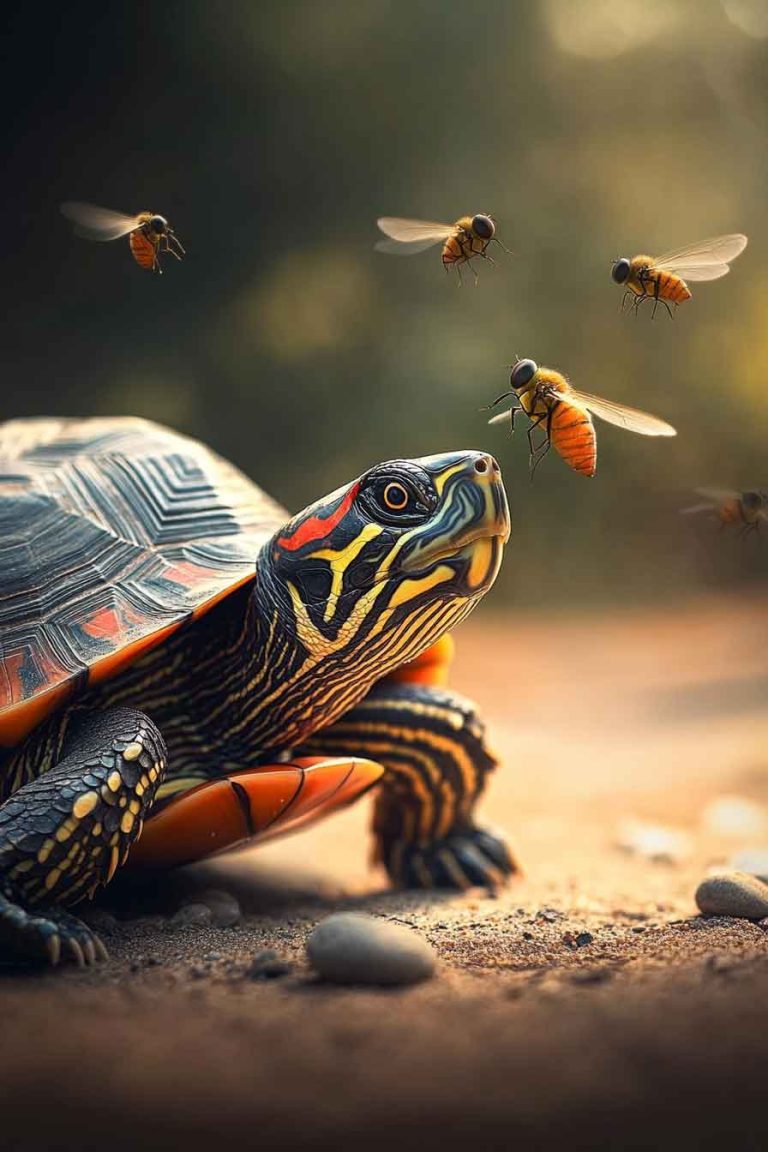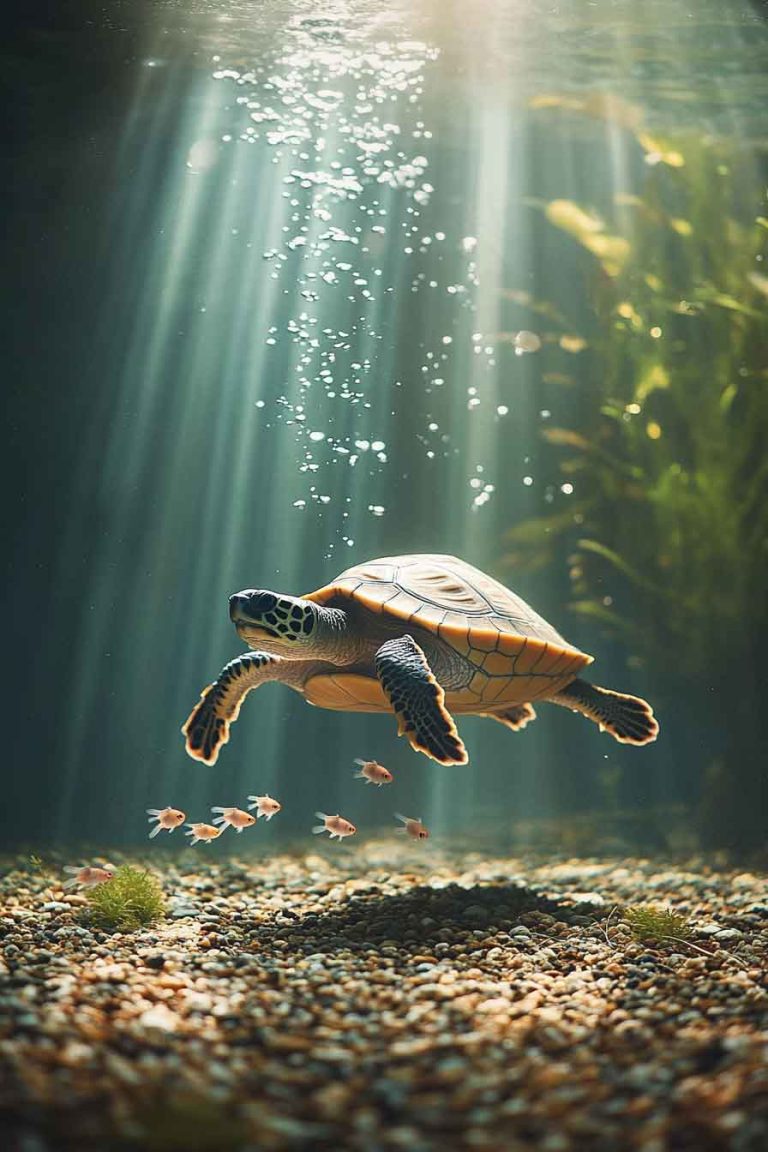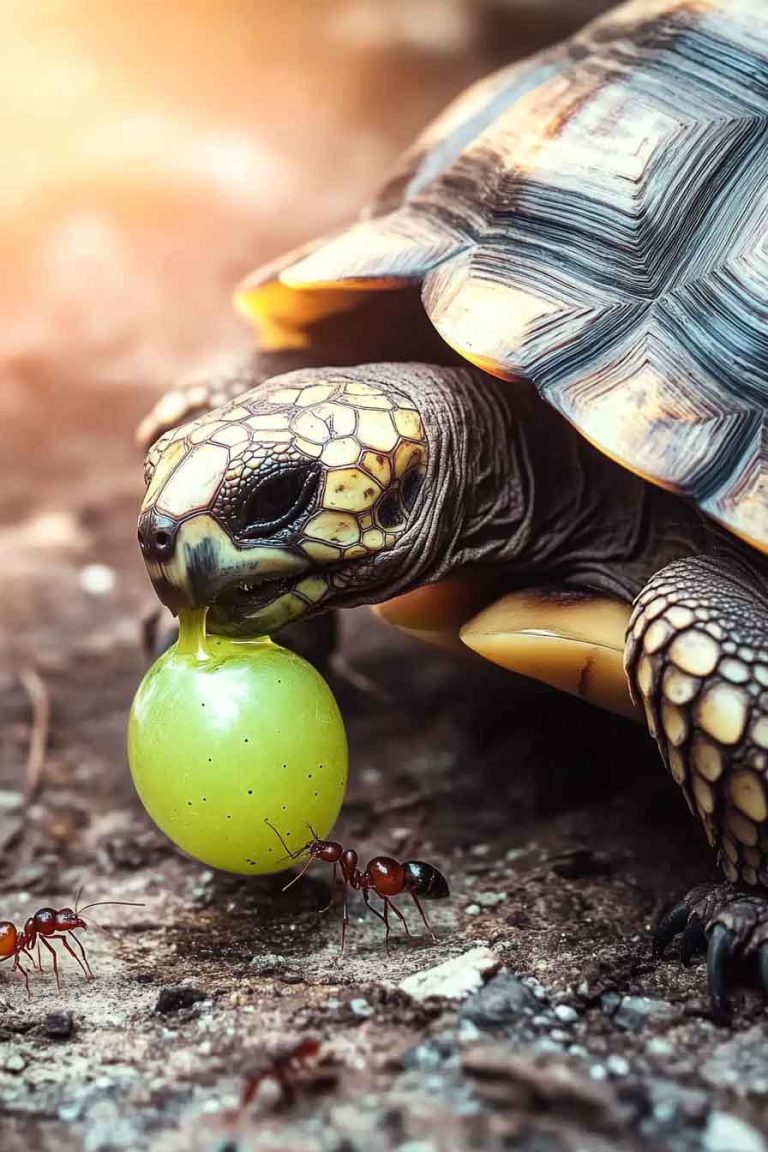Can Turtles Eat Betta Fish Food? Risks, Benefits & How Often to Feed
One day, I was cleaning my turtle’s tank and realized I had completely run out of his food. No pellets, no greens prepped — just a tiny container of betta fish food left over from an old tank. I paused and thought, “Can my turtle eat betta food… just for today?” If you’ve ever been…
One day, I was cleaning my turtle’s tank and realized I had completely run out of his food. No pellets, no greens prepped — just a tiny container of betta fish food left over from an old tank. I paused and thought, “Can my turtle eat betta food… just for today?”
If you’ve ever been in that situation, you’re not alone. It seems simple: fish live in water, turtles live in water… can’t their food be the same?
So, can turtles eat betta fish food?
Yes — but only occasionally, and only as a last-minute backup. Betta food is not toxic for turtles, but it isn’t made for their needs. It lacks essential nutrients turtles require daily, like fiber, balanced minerals, and calcium. Feeding it regularly can cause digestive problems, shell weakness, and long-term nutritional imbalances.
In this article, I’ll walk you through what’s really in betta food, how it affects turtles, and exactly how often it can be safely offered — based on my own experience and what I’ve learned from vets and reptile care guides.
Can You Feed Betta Fish Food to Your Pet Turtle?
Yes — but only in very small amounts and never as a regular diet.
I’ve fed my red-eared slider betta pellets before — once when his regular pellets were delayed in the mail. He ate them instantly. They’re small, soft, and packed with fish meal and shrimp powder — so most turtles find the smell and taste irresistible.
But here’s the catch: betta food is designed for carnivorous tropical fish, not reptiles. Betta fish have short digestive tracts and high protein needs. Turtles, especially omnivores and herbivores like sliders, box turtles, and painted turtles, need a wider range of nutrients.
Betta food usually contains:
- High protein from fish and shrimp meal
- Very low fiber
- Little to no calcium
- High phosphorus
- Added preservatives and color enhancers
The result? If you feed it too often, your turtle could end up with:
- Calcium deficiency (leading to weak shells or bone problems)
- Constipation or diarrhea (due to low fiber and fat)
- Selective eating habits (refusing greens or pellets afterward)
When I did use it, I kept it to just one feeding and made sure to go back to regular turtle pellets the next day — plus added dark leafy greens for balance.
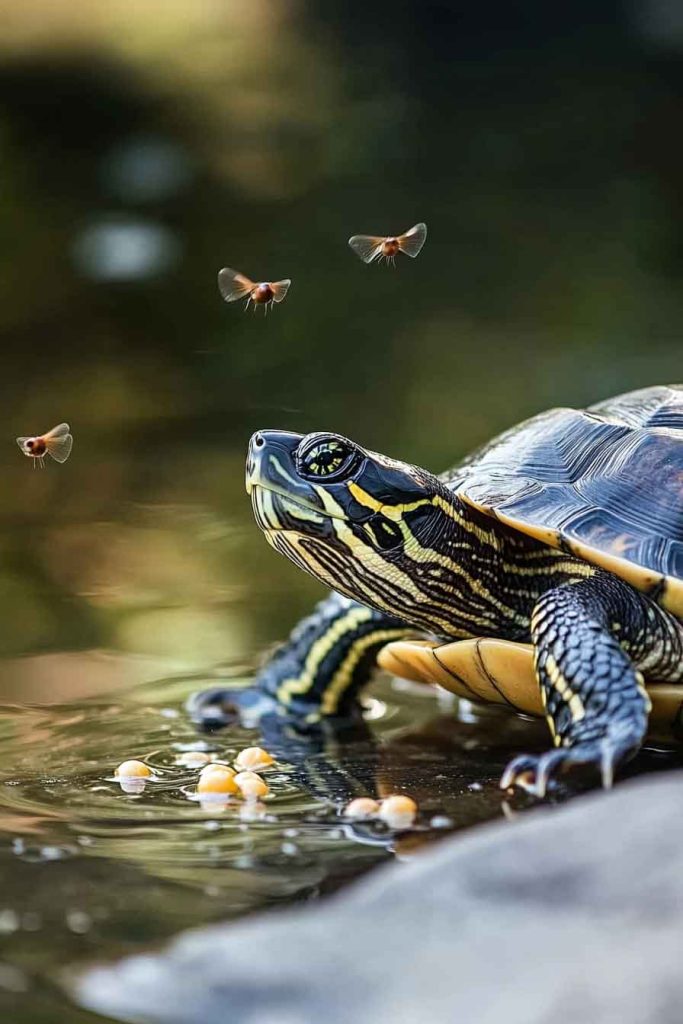
What’s Actually Inside Betta Fish Food?
Let’s break down the common ingredients and nutrients in 100 grams of standard betta pellets:
- Crude Protein: 42–50 g
- Crude Fat: 6–10 g
- Crude Fiber: 1–2 g
- Ash (minerals): ~10 g
- Moisture: 8–10 g
- Calcium: 0.5–1 g (very low)
- Phosphorus: Often 2–3x higher than calcium
- Main ingredients: Fish meal, shrimp meal, wheat flour, soy protein, fish oil, sometimes color dyes and stabilizers
Now here’s the big concern: turtles need a calcium-to-phosphorus ratio of about 2:1 to maintain strong shells and bones. Betta food flips that ratio — it’s usually 2:1 in favor of phosphorus, which blocks the turtle’s ability to absorb the calcium it does get.
Also, there’s almost no plant content or natural fiber — which is essential for digestion, especially in semi-aquatic and land turtles. Feeding betta food regularly can lead to sluggish digestion, unformed stool, or lack of appetite over time.
What Happens If a Turtle Eats Too Much Betta Food?
I’ll be honest — I’ve made the mistake of feeding betta pellets for too many days in a row. It didn’t take long for the effects to show.
My turtle became less interested in vegetables, moved a little slower, and his poop turned softer and darker. That’s when I knew: even though he was eating, his body wasn’t getting the right fuel.
Here’s what can happen if your turtle eats too much betta food:
1. Calcium Deficiency & Shell Weakness
One of the most dangerous problems is a lack of calcium. Because betta food is high in phosphorus and low in calcium, it disrupts the 2:1 calcium-to-phosphorus ratio turtles need. When phosphorus is too high, it stops the body from using the calcium it gets.
This can lead to Metabolic Bone Disease (MBD) — something I’ve sadly seen in rescue turtles. Symptoms include:
- Soft or deformed shells
- Weak limbs or trembling legs
- Jaw weakness
- Trouble swimming or walking
Even young turtles can suffer from this if their diet lacks proper calcium for just a few weeks.
2. Digestive Upset
Betta food is made mostly from fish and shrimp protein, with almost no fiber. Turtles, especially semi-aquatic and land species, need a mix of protein and plants to keep their digestion smooth.
Too much betta food can cause:
- Diarrhea
- Constipation
- Gassy or bloated stomachs
- Foul-smelling stool
If this happens, I pause all protein foods and focus on hydration, leafy greens, and a warm basking spot to help digestion reset.
3. Diet Refusal or Picky Eating
Betta pellets are fishy, soft, and high in fat — and turtles love them. The problem? If you give it too often, they may refuse regular food like pellets, greens, or veggies. It’s like feeding candy to a child — good luck getting them to eat broccoli afterward.
I had to stop feeding all treats for two weeks once, just to reset my turtle’s appetite after overdoing fish-based food.
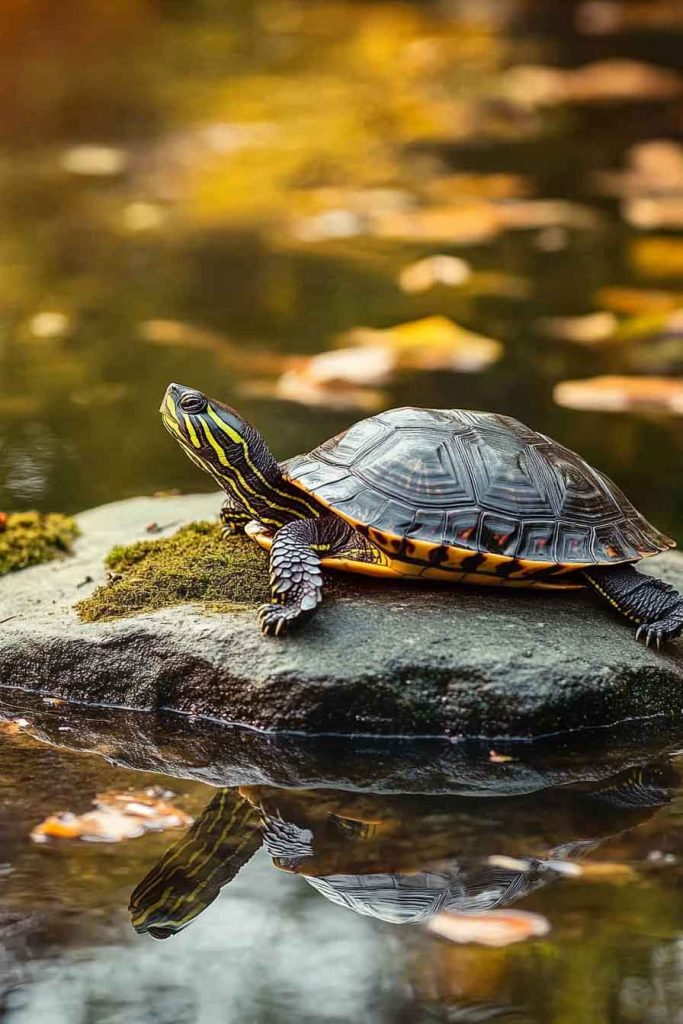
Is Betta Food Safe for All Turtle Species?
Let’s break it down by type:
Red-Eared Sliders / Painted Turtles / Map Turtles
These are semi-aquatic omnivores. They can digest small amounts of betta food but need variety — pellets, greens, veggies, insects. I only give a few betta pellets once every few weeks if needed.
Box Turtles / Wood Turtles
These land-based turtles need more plant matter and fiber in their diet. Betta food is too high in protein and lacks the fiber they rely on. I personally avoid giving them betta food at all.
Musk Turtles / Mud Turtles
These turtles are more carnivorous. Betta food might be more tolerable for them short-term, but it still lacks calcium and other nutrients. I’d only use it as a rare treat or in emergencies.
Can Baby Turtles Eat Betta Fish Food?
This is a tricky one — and I say only with extreme caution.
Baby turtles need more protein than adults, so at first glance, betta food seems like it might help. But their growing bodies also need:
- High calcium
- Vitamin D3
- Proper UVB light
- Balanced minerals
Betta food doesn’t deliver on those needs. Feeding it to baby turtles more than once or twice can risk improper shell growth or bone weakness.
When I raised hatchlings, I stuck to:
- Hatchling turtle pellets (formulated with calcium and vitamin D3)
- Chopped leafy greens
- Occasional insects
- Shrimp or fish-based treats once every 10–14 days
Betta food? I kept it locked away in a drawer. It’s just not worth the risk during the early growth stages.
How to Safely Feed Betta Fish Food to Your Turtle
If you ever need to use betta food in a pinch, here’s exactly how I do it:
✅ Use It Only As a Backup
I only feed betta food if I’m completely out of turtle pellets, and even then, never more than 1–2 feedings in a row.
✅ Keep Portions Small
For adult turtles:
- 4–5 pellets max per feeding, depending on size
For baby turtles: - 2–3 pellets, chopped or soaked if needed
✅ Balance With Other Foods
The next day, I always follow up with:
- Dark leafy greens (like romaine, dandelion, collard greens)
- Calcium-rich veggies
- Regular pellets dusted with calcium powder
- A UVB basking session to help calcium absorption
❌ Avoid These Mistakes:
- No long-term feeding — it’s not a substitute
- No colored or overly processed fish flakes
- No mixing it with fruit or sugary snacks
- Don’t use for land turtles or tortoises
Frequently Asked Questions (FAQs)
Can Box Turtles Eat Betta Fish Food?
I wouldn’t recommend it. Box turtles are mostly land-based and need more fiber and plant matter. Betta food is too rich in protein and can mess with their digestion.
Can Red-Eared Sliders Eat Betta Fish Food?
Yes — but only occasionally. I’ve used it once or twice when I ran out of pellets, but never for more than 1–2 days in a row. I always go back to a balanced diet after.
Can Painted or Map Turtles Eat Betta Food?
Yes, same rule applies: okay as a short-term emergency fix, but not something to use often. These turtles thrive with varied diets.
Can Tortoises Eat Betta Fish Food?
Absolutely not. Tortoises are herbivores and should never eat fish-based food. It can cause serious harm to their kidneys and liver.
Conclusion
So, can turtles eat betta fish food?
Yes — but only in small amounts and only when you have no other choice.
Betta food isn’t harmful, but it’s not healthy enough for turtles. It lacks calcium, fiber, and balance — and feeding it too often can lead to real problems, like shell deformities, digestion issues, and poor eating habits.
I only give betta food once every few months, and always pair it with a return to fresh veggies, calcium, and proper turtle pellets. It’s an emergency backup — never the main meal.
I hope this post helped! If your turtle has ever had betta food, I’d love to hear how they reacted. Drop your experience in the comments below and let’s help each other raise strong, healthy turtles.

